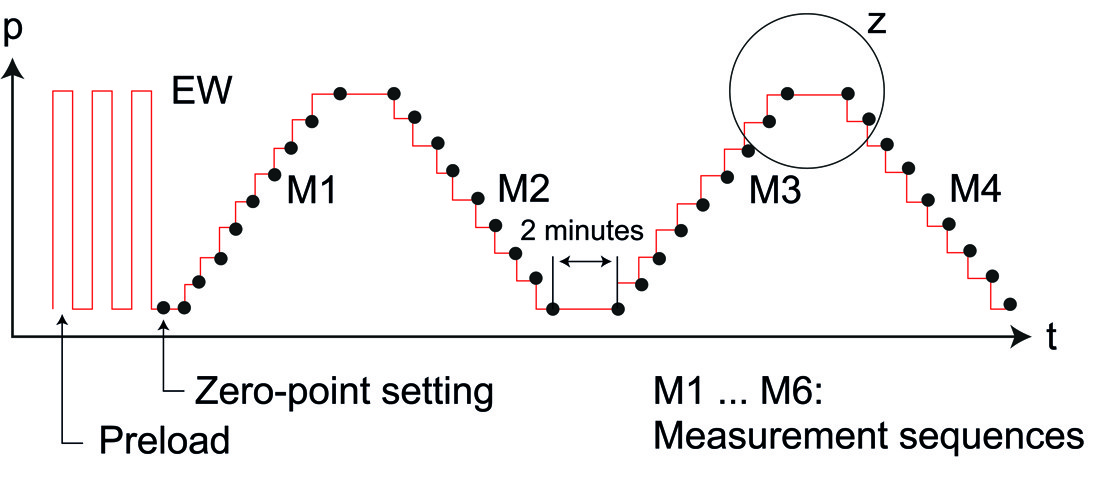
Traceability in the calibration of pressure transmitters
Mechanical, chemical and thermal loads over time reduce the accuracy of a pressure transmitter. For this reason they should be regularly calibrated, and it is in this context that the term “traceable” plays an important role.
The calibration of pressure transmitters involves testing their precision and recognizing shifted readings at an early stage. A calibration thus takes place before an adjustment, during which potential malfunctions are remedied. The calibration itself is performed with the aid of a reference device (or standard). The accuracy of this reference device must be traceable to a national standard in order to meet important standards series such as EN ISO 9000 and EN 45000.
The calibration hierarchy
To ensure comparability of the measured results, these have to be traceable to a national standard via a chain of comparative measurements. If we imagine this hierarchy as a pyramid, then the accuracy will increase ascendingly. At the pinnacle stands the national standard as applied by the national institutes of metrology. In Germany, it is the Physikalisch Technische Bundesanstalt (PTB), the national testing authority, which is responsible for metrology. In the United States it is the National Institute of Standards and Technology NIST. The reference standard (also termed primary standard) is normally a deadweight tester. With a measurement uncertainty of <0.005%, this offers the greatest possible accuracy.
To fulfill its task of offering services to science and business in the field of calibration, PTB also collaborates with accredited calibration laboratories. These use factory or working standards, which are then calibrated at regular intervals with the reference standards of the national institute. Working standards reside directly below the reference standard within the hierarchy and have a typical measurement uncertainty of >0.005% to 0.05%. Factory standards, which are also applied in production with the role of quality assurance, have a typical measurement uncertainty of >0.05% to 0.6%. At the lowest level in the hierarchical structure sit the in-house testing devices
Each of these reference devices is calibrated using the next higher standard within the hierarchy. The measurement uncertainty of the standard should be three to four times lower than that of the reference device to be calibrated.
Any test equipment used internally must also be traceable to the national standard. Traceability thus describes the process by which the readings of a measuring device in one or more stages – depending on the type of device involved – can be compared with a primary standard for the relevant measured variable. The German Accreditation Body (DakkS) has defined the following elements in regard to traceability:
- The comparison chain must remain unbroken (by not skipping a step or comparing a test device directly with the reference standard, for example).
- Measurement uncertainty must be known for each step in the chain, so that the total uncertainty over the entire chain can be calculated.
- Every single step of the measurement chain will need to be documented.
- All bodies performing one or more steps in traceability must be able to demonstrate their competence by means of appropriate accreditations.
- The comparison chain has to end with primary standards for realizing SI units.
- Re-calibrations need to be carried out at regular intervals. These time periods depend on a number of factors, including the frequency and nature of use.
More detailed information on the traceability of measuring and test equipment to national standards is provided by DAkkS here.


